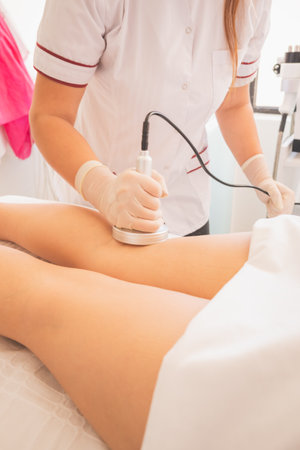1. Understanding Healthy Fats
When it comes to glowing, hydrated skin, healthy fats play a bigger role than you might think. These essential nutrients not only fuel your body, but also support your skin’s natural moisture barrier. Let’s break down what healthy fats are and how they contribute to both your overall wellness and skin health.
What Are Healthy Fats?
Healthy fats are types of dietary fat that provide energy and support many vital functions in the body — from brain function to hormone production. They are especially important for keeping your skin soft, smooth, and moisturized from within.
Types of Healthy Fats
There are three main types of fats that are considered beneficial when consumed in moderation:
| Type of Fat | Description | Common Sources | Benefits for Skin |
|---|---|---|---|
| Saturated Fats | Mainly found in animal products and some plant oils; solid at room temperature. | Coconut oil, butter, cheese, whole milk | Helps maintain cell membrane integrity and supports skin elasticity when consumed moderately. |
| Monounsaturated Fats (MUFA) | Liquid at room temperature; known for heart-healthy benefits. | Olive oil, avocados, nuts like almonds and cashews | Supports skin hydration by strengthening the skin barrier and reducing inflammation. |
| Polyunsaturated Fats (PUFA) | Includes essential fatty acids like omega-3 and omega-6; must be obtained through diet. | Fatty fish (like salmon), flaxseeds, walnuts, sunflower seeds | Omega-3s help reduce dryness and inflammation; omega-6s aid in cell structure and function. |
The Role of Healthy Fats in Overall Health
Beyond just skin benefits, healthy fats are crucial for:
- Brain health: Especially omega-3s, which support memory and mood regulation.
- Heart health: MUFAs and PUFAs can help lower bad cholesterol levels.
- Nutrient absorption: Some vitamins like A, D, E, and K require fat to be absorbed properly.
- Hormone production: Fats are building blocks for hormones that influence everything from metabolism to mood.
A Quick Tip:
Focus on incorporating more whole-food sources of healthy fats into your meals rather than relying on processed or fried foods. Your skin — and your body — will thank you!
2. The Connection Between Fats and Skin Hydration
Your skin’s glow isn’t just about what you put on it—it’s also about what you eat. Healthy fats play a key role in keeping your skin moisturized, soft, and smooth. Let’s break down how dietary fats help your skin stay hydrated from the inside out.
How Fats Support the Skin Barrier
Your skin barrier is like a shield that keeps moisture in and irritants out. It’s made up of lipids (fats), including ceramides, cholesterol, and fatty acids. When you consume healthy dietary fats, they help maintain this protective layer, preventing water loss and dryness.
Key Benefits of Healthy Fats for Skin:
| Fat Type | Main Sources | Skin Benefits |
|---|---|---|
| Omega-3 Fatty Acids | Fatty fish (salmon, mackerel), chia seeds, flaxseeds, walnuts | Reduces inflammation, strengthens cell membranes for better hydration |
| Omega-6 Fatty Acids | Safflower oil, sunflower seeds, corn oil | Aids in skin barrier repair and moisture retention |
| Monounsaturated Fats | Avocados, olive oil, almonds | Nourishes skin cells, improves elasticity and softness |
| Saturated Fats (in moderation) | Coconut oil, dairy products, dark chocolate | Aids in maintaining overall lipid balance in the skin barrier |
The Link Between Dry Skin and Low Fat Intake
If your diet lacks enough healthy fats, your skin may show it. Signs like flakiness, tightness, or dullness can be linked to a weakened skin barrier. This makes it harder for your skin to hold onto moisture. By eating a balanced amount of good fats daily, youre giving your skin the tools it needs to stay plump and dewy.
A Tip for Glowing Skin:
Aim to include sources of omega-3s and monounsaturated fats in your meals every day. Think salmon salad drizzled with olive oil or avocado toast topped with flaxseeds—simple changes that can make a big difference over time.
Your skin is a reflection of your inner health. By nourishing it with the right kinds of fat, youre not just improving how it looks—youre helping it function at its best.
![]()
3. Best Sources of Healthy Fats for Skin
Healthy fats are essential for maintaining soft, hydrated, and elastic skin. Including the right types of fats in your diet can help lock in moisture and support your skin’s natural barrier. Here are some of the best nutrient-rich sources of healthy fats that promote glowing, well-hydrated skin.
Avocados
Avocados are packed with monounsaturated fats, which help keep skin supple and moisturized. They’re also rich in vitamin E, an antioxidant that helps protect the skin from damage.
How to Enjoy:
- Add slices to salads or sandwiches
Nuts
Nuts like almonds and walnuts provide essential fatty acids and antioxidants. Almonds are high in vitamin E, while walnuts offer a good dose of omega-3s, both important for skin health.
Top Picks:
| Nut | Main Benefit |
|---|---|
| Almonds | High in Vitamin E for skin repair |
| Walnuts | Rich in Omega-3s for elasticity |
| Pistachios | Antioxidants and healthy fats |
Seeds
Chia seeds, flaxseeds, and sunflower seeds are tiny powerhouses loaded with omega-3 fatty acids, zinc, and other nutrients that help maintain skin hydration and reduce inflammation.
Easy Ways to Add Seeds:
- Sprinkle on yogurt or oatmeal
- Add to smoothies or baked goods
- Mix into salads or grain bowls
Fatty Fish
Salmon, mackerel, sardines, and trout are excellent sources of omega-3 fatty acids. These healthy fats play a key role in keeping your skin thick, soft, and moisturized.
Serving Ideas:
- Grill salmon with herbs for dinner
- Add canned sardines to a salad or toast
- Use smoked trout in wraps or pasta dishes
Quick Reference Table: Top Healthy Fat Sources for Skin Moisture
| Food Source | Main Nutrients | Skin Benefit |
|---|---|---|
| Avocados | Monounsaturated fats, Vitamin E | Smoothness & protection from dryness |
| Almonds & Walnuts | Vitamin E, Omega-3s | Elasticity & repair support |
| Chia & Flaxseeds | Omega-3s, Zinc | Moisure balance & inflammation control |
| Fatty Fish (Salmon) | Omega-3 fatty acids, Protein | Dewy glow & reduced redness/dryness |
Incorporating these foods into your daily meals is a simple yet effective way to nourish your skin from within. Whether youre whipping up a smoothie with seeds or enjoying grilled salmon for dinner, each bite brings you closer to healthier, more radiant skin.
4. Common Myths About Fats and Skin Health
When it comes to skin health, fats often get a bad rap. Many people believe that eating fats will lead to oily skin, clogged pores, or breakouts. But the truth is, not all fats are created equal—and some are actually essential for keeping your skin healthy, hydrated, and glowing.
Myth #1: All Fats Cause Acne
This is one of the most common misconceptions. While greasy foods like fried snacks can sometimes contribute to inflammation in the body, its not the fat itself thats the problem—its usually the type of fat and how its processed. Healthy fats, such as those found in avocados, nuts, seeds, and fatty fish, contain anti-inflammatory properties that can actually help reduce acne flare-ups and support clear skin.
Myth #2: Fats Make Your Skin Oily
Many people think that consuming fats will make their skin oilier. In reality, healthy fats help balance your skins natural oil production. When your body doesnt get enough good fats, your skin may become dry and overcompensate by producing more oil—leading to clogged pores. Including balanced amounts of omega-3 and omega-6 fatty acids in your diet helps maintain proper hydration without triggering excess oiliness.
Myth #3: Low-Fat Diets Are Better for Skin
Low-fat diets have been popular for decades, but cutting out too much fat can actually harm your skin. Essential fatty acids play a key role in maintaining your skin’s moisture barrier—a layer that locks in hydration and keeps irritants out. Without enough healthy fats, your skin can become dry, flaky, or irritated.
The Truth: Not All Fats Are Bad
The key is choosing the right types of fat. Heres a quick comparison to help you understand which fats to include and which ones to limit:
| Type of Fat | Sources | Effect on Skin |
|---|---|---|
| Healthy (Unsaturated) Fats | Avocados, olive oil, nuts, seeds, fatty fish (like salmon) | Hydrates skin, reduces inflammation, supports elasticity |
| Saturated Fats (in moderation) | Coconut oil, dairy products, meat | Can be part of a balanced diet but should be consumed mindfully |
| Unhealthy (Trans) Fats | Baked goods with hydrogenated oils, fast food | May promote inflammation and negatively impact skin health |
Bottom Line on Fats and Skin Moisture
Your skin needs healthy fats to stay moisturized from within. Instead of fearing all fats, focus on incorporating nutrient-rich sources into your daily meals. This not only nourishes your body but also helps you achieve smoother, more radiant skin.
5. How to Incorporate Healthy Fats Into Your Diet
Adding skin-nourishing fats into your daily meals doesn’t have to be complicated. By making a few simple changes in your cooking methods and meal planning, you can support your skin’s hydration from the inside out.
Choose the Right Cooking Oils
Certain oils are rich in essential fatty acids that help maintain skin moisture. Use these healthier options when preparing meals:
| Oil | Main Benefit for Skin | Best Use |
|---|---|---|
| Extra Virgin Olive Oil | Rich in antioxidants and oleic acid | Salad dressings, low-heat cooking |
| Avocado Oil | Packed with monounsaturated fats and vitamin E | Sautéing, grilling, baking |
| Coconut Oil (in moderation) | Naturally moisturizing, contains lauric acid | Baking, medium-heat cooking |
| Flaxseed Oil | High in omega-3s (ALA) | Add to smoothies or drizzle over cold dishes |
Add Fatty Acids to Every Meal
You don’t need to overhaul your entire diet—just include small portions of healthy fats throughout the day. Here are some easy ways to get started:
- Add avocado slices to toast, salads, or sandwiches.
- Toss nuts or seeds, like walnuts or chia seeds, into yogurt or oatmeal.
- Cook with oily fish, such as salmon or mackerel, 2–3 times per week.
- Smoothies are a great place for healthy fat add-ins like nut butters or flaxseed oil.
- Dip veggies in hummus or guacamole, which contain olive oil and avocado fats.
Create Balanced Meals That Support Skin Health
A well-rounded plate helps your body absorb and use healthy fats effectively. Try using this simple formula at each meal:
| Nutrient Group | % of Plate | Example Foods |
|---|---|---|
| Healthy Fats | ~20% | Nuts, seeds, olive oil, avocado, fatty fish |
| Lean Proteins | ~25% | Poultry, legumes, tofu, eggs, fish |
| Fiber-Rich Carbs & Veggies | ~55% | Berries, leafy greens, quinoa, sweet potatoes, whole grains |
A Sample Day of Skin-Friendly Eating:
- Breakfast: Greek yogurt with chia seeds and sliced almonds; topped with berries.
- Lunch: Grilled salmon salad with olive oil vinaigrette and avocado slices.
- Dinner: Quinoa bowl with roasted veggies and tahini dressing; side of sautéed spinach in avocado oil.
- Snack: Apple slices with almond butter or a handful of walnuts.
A Quick Tip:
The key is moderation—healthy fats are calorie-dense but incredibly beneficial when consumed in balanced amounts. Focus on variety and whole-food sources to maximize skin hydration benefits naturally.


